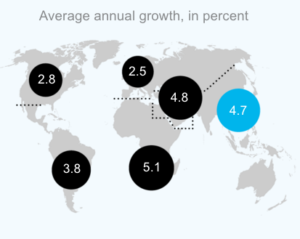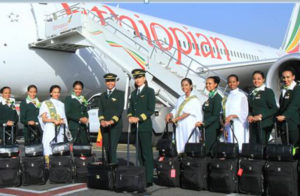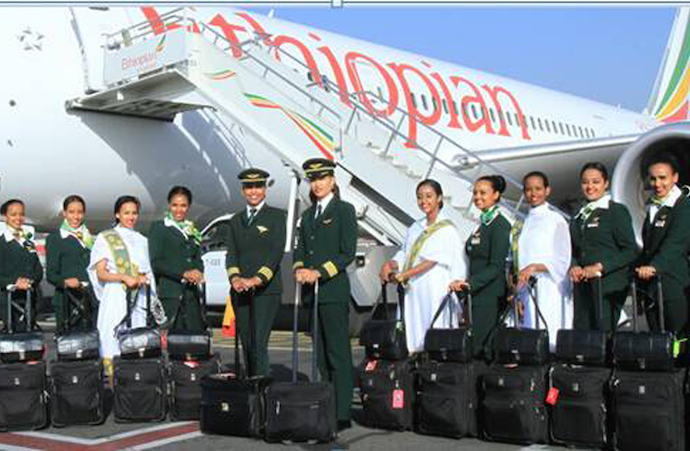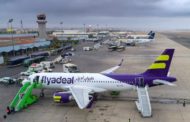 Passengers on Kenya Airways’ Boeing 787-8 Dreamliner took a historic 15-hour flight from Nairobi’s Jomo Kenyatta International Airport to New York. The new route aims to keep the national carrier competitive against a number of African airlines that already provide direct flights to the US from the continent including Egypt Air and South African Airways. The move is part of wider expansion plans by African airlines. Ethiopian Airlines launched new routes from Addis Ababa to Jakarta, Indonesia, Geneva, Switzerland, and Chicago this year, while Air Tanzania also announced new direct flights to Uganda and Burundi.
Passengers on Kenya Airways’ Boeing 787-8 Dreamliner took a historic 15-hour flight from Nairobi’s Jomo Kenyatta International Airport to New York. The new route aims to keep the national carrier competitive against a number of African airlines that already provide direct flights to the US from the continent including Egypt Air and South African Airways. The move is part of wider expansion plans by African airlines. Ethiopian Airlines launched new routes from Addis Ababa to Jakarta, Indonesia, Geneva, Switzerland, and Chicago this year, while Air Tanzania also announced new direct flights to Uganda and Burundi.
Ethiopian Airlines is proving to be unstoppable in its plans to take over Africa’s skies.
The company recently announced new aircraft purchases valued at around $332 million to help solidify its domestic and regional reach. The order of the Q400 turboprops will expand its Bombardier fleet to 39 and will help reach underserved markets in Africa, especially those with low traffic density routes and small or challenging airfields.
 The state-owned carrier currently operates 96 passenger aircraft and freighters and has more than 60 fleets on order. That essentially makes it Africa’s largest airline, flying to over 20 in-country locations, 58 destinations in Africa, and more than 100 cities in five continents globally.
The state-owned carrier currently operates 96 passenger aircraft and freighters and has more than 60 fleets on order. That essentially makes it Africa’s largest airline, flying to over 20 in-country locations, 58 destinations in Africa, and more than 100 cities in five continents globally.
The recent aircraft deals also show the carrier had surpassed its own Vision 2025 plans, which stipulated that it operate 100 planes by 2025—forcing it to revise its objectives to “150 or more” planes in the next seven years, according to CEO Tewolde Gebremariam.
Ethiopian is also expanding and improving the services of its major international airport in Addis Ababa, and its aviation academy was also recently ranked among the world’s top training centers.
The Single African Air Travel Market (SAATM) initiated by the African Union (AU) in late January. As one of the AU’s pan-African Agenda 2063 flagship projects, the plan aims to improve air connectivity in Africa and use air transportation as an engine for economic growth, job creation, and integration.
 So far, 21 countries that command more than 670 million of the continent’s population have committed to the plan. These include Benin, Nigeria, and Sierra Leone in the West; Kenya, and Rwanda in the East; Zimbabwe and South Africa in the south; and Egypt in the North.
So far, 21 countries that command more than 670 million of the continent’s population have committed to the plan. These include Benin, Nigeria, and Sierra Leone in the West; Kenya, and Rwanda in the East; Zimbabwe and South Africa in the south; and Egypt in the North.
The single market is also host to eight of Africa’s top ten busiest airports including Bole International Airport in Ethiopia and O. R. Tambo in Johannesburg, South Africa. Up to 15 carriers, which account for more than 70% of intra-African air travel, have also signed up for the common market including Ethiopian Airlines, Kenya Airways, South African Express, and Egypt Air.














































